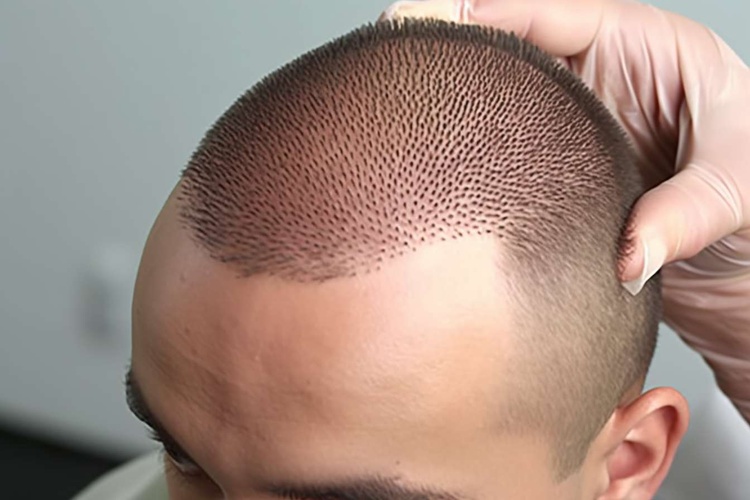Hair Transplants: Restore Natural Hair and Confidence
Considering a hair transplant? Learn how modern techniques like FUE and FUT can permanently address thinning hair, receding hairlines, and even sparse eyebrows. This guide explains who benefits—including women—what to expect before, during, and after surgery, and typical costs to help you make an informed decision.

Hair Transplants: Restore Natural Hair and Confidence
Hair transplantation has evolved into a reliable option for people seeking a long-term solution to hair loss. Whether the goal is to rebuild a receding hairline, add density to thinning areas, or reconstruct eyebrows, contemporary transplant methods can produce natural-looking, lasting results when performed by an experienced specialist.
How modern hair transplant techniques work
Two principal surgical approaches dominate the field: Follicular Unit Transplantation (FUT) and Follicular Unit Extraction (FUE). FUT involves removing a narrow strip of scalp from the donor zone—usually the back of the head—then dissecting it into individual follicular units for placement in the recipient area. FUE, by contrast, harvests individual follicular units directly from the donor area, leaving tiny puncture wounds instead of a linear scar.
Both techniques share the same objective: transplant hair in a way that mirrors the patient’s original growth pattern. Surgeons plan graft placement, angle, and density to match natural hair direction and facial proportions, producing results that blend seamlessly with existing hair.
Can women benefit from hair transplants?
Absolutely. Although hair restoration is often associated with male-pattern baldness, many women experience thinning that can be successfully treated with transplantation. Female hair loss commonly presents as diffuse thinning, widening part lines, or temporal recession rather than full bald spots, and surgeons adapt transplant strategies to those patterns.
For women, the focus is typically on increasing overall density and refining the hairline to restore a softer, more youthful frame to the face. Because donor hair may be limited in some female cases, careful planning and realistic expectations are essential, and sometimes a combination of treatments yields the best outcome.
What is an eyebrow transplant and who should consider it?
An eyebrow transplant is a specialized procedure designed to rebuild or reshape eyebrows that are thin, overplucked, scarred, or congenitally sparse. Follicular units—usually taken from the scalp—are meticulously implanted into the brow region with close attention to hair angle and growth direction so the result appears natural.
This option appeals to those wanting to restore brows lost to trauma or surgeries, correct asymmetry, or simply achieve a fuller, better-defined brow for cosmetic reasons. As with scalp transplants, careful technique and experienced hands are key to achieving subtle, natural results.
How a transplant can change appearance and confidence
Restoring hair to thinning areas can have a pronounced effect on facial balance. A fuller hairline and denser temples frame the face and often make features appear more youthful and proportionate. Beyond aesthetics, many patients report a significant psychological benefit: improved self-esteem, greater styling flexibility, and increased comfort in social and professional settings.
The visual impact is most notable when the transplant harmonizes with the patient’s facial proportions and hair characteristics, so individualized planning is essential.
What to expect during and after the procedure
Most transplants are outpatient procedures performed under local anesthesia. Duration depends on graft numbers—sessions may last several hours. Discomfort is usually manageable with local anesthetic and sedatives when needed.
Post-operative effects commonly include swelling, mild tenderness, and crusting at graft sites. Donor and recipient areas may feel tight for a few days. It is normal for transplanted hairs to shed within the first two to three weeks; this prepares follicles for a growth phase that typically begins around three to four months. Noticeable improvements in density occur over the next 6 to 12 months.
Recovery periods vary: many patients return to desk work within a week, while more strenuous activities should be avoided for several weeks. Strict adherence to post-op instructions—such as sun protection, limited exercise initially, and prescribed medications—supports healing and reduces infection risk.
Typical costs and what affects price
| Country | Average Cost Range (USD) | Technique |
|---|---|---|
| United States | $4,000 - $15,000 | FUE / FUT |
| Turkey | $1,500 - $5,000 | FUE |
| India | $1,200 - $5,000 | FUE / FUT |
| United Kingdom | $5,000 - $15,000 | FUE / FUT |
| Canada | $5,000 - $15,000 | FUE / FUT |
Prices, rates, or cost estimates mentioned in this article are based on the latest available information but may change over time. Independent research is advised before making financial decisions.
Costs depend on the number of grafts required, chosen technique, the surgeon’s experience, clinic location, and included services (pre-op assessments, medications, follow-up). While price matters, prioritizing a qualified, board-certified surgeon and a reputable clinic will yield safer, more satisfying results. Many practices offer financing plans to spread payment.
Choosing a surgeon and final considerations
Selecting a provider should involve reviewing before-and-after photos, patient testimonials, and credentials. A detailed consultation helps determine candidacy, estimate graft needs, and set realistic goals. Discuss potential alternatives—like medical therapies or low-level laser therapy—when donor hair is limited.
A successful outcome combines technical skill, realistic expectations, and diligent aftercare. If you are contemplating a transplant, schedule an evaluation with a trusted specialist to explore whether the procedure aligns with your aesthetic goals and medical profile.
This article is for informational purposes only and should not be considered medical advice. Please consult a qualified healthcare professional for personalized guidance and treatment.






